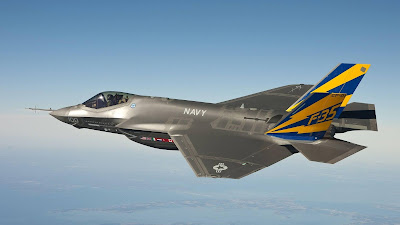Will China’s newest Radar systems be a game changer?
 |
| [Radars] |
The world's second-largest military spending country has revealed some of its most cutting-edge hardwire, versatile, and handheld systems.
China's radar systems are capable of detecting stealth aircraft, drones, and even cruise missiles flying at low altitudes. The flagship YLC U8E Band 3D surveillance radar was also unveiled at the Nanjing Exhibition. The SLC 7L Band 3D surveillance radar was also on display.
According to the creator of the YLC U8E, a combination of software and hardware will enable it to detect even the most advanced stealth aircraft. This poses a challenge to the F-22 Raptor and the multibillion-dollar F-35 Joint Strike Fighter.
The SLC 7L is designed to detect stealth planes, helicopters, rockets, and artillery shells. The ULC 48, also known as the terminator of drones, will be able to detect low-altitude, small, and slow-moving objects. It's a lightweight, multipurpose radar that a single soldier can carry.
How will China’s latest hardwire change aerial warfare?
Radars use radio waves to calculate an object's length, angle, or velocity. The F-35 is a fifth-generation stealth fighter that can leave a smaller footprint in the sky, making it much more difficult to track.
 |
| [F-35B of US Navy] |
This Joint Strike Force(JSF) currently consists of only the United States, the United Kingdom, Italy, the Netherlands, Australia, Canada, Denmark, Norway, Israel, Singapore, Belgium, Japan, and South Korea.
However, the F-35's stealth advantage could now be a liability, and if China's newest radars perform as anticipated, a trillion-dollar F-35 may become a sitting duck.
Because of these highly efficient radar systems, militaries all over the world are looking to upgrade their drones. The size and low flying ability of these drones make detection difficult. Some of them are so advanced that they can interfere with the enemy's air defenses and communication systems.
According to reports, the technique was used against a Russian air base in Syria as well as Saudi oil facilities.
The effect of twin drone strikes in the heart of Saudi Arabia's oil industry on global oil supply and price in 2019 was enormous.
In 2018, the Russian naval base in Tartus, Syria, and the Khmeimim Air Base in the northwestern part of Syria were targeted by drones guided by GPS systems for the first time.
Consider what would happen if a single soldier carried Chinese YLC -48 on his back. He was able to spot the drones before they launched their assault.
As a result, it's no surprise that there's a competition to produce the most advanced radar systems, with China and Russia among the leading contenders.
Russia has developed a number of modern and sophisticated radar systems. The scientists' mission now is to build a computer that can see objects that aren't visible to the human eye, rather than just aircraft.
In the other hand, there are several frequent developments.
Radar waves can be deflected thanks to technological advancements. Electrodes embedded in aircrafts may be turned on in the future to charge the craft's skin, causing the gas around it in the atmosphere to ionize and form plasma.
With the aid of a device, this coating may rapidly adjust its density to absorb any possible radar frequency.
China is increasing its military spending, especially on the high seas, in response to growing tensions with the United States over a variety of issues.
Atolls and reefs have been transformed in many parts of the South China Sea islands. China claims almost the entire territory and has been militarizing the islands for years by erecting outposts in remote locations.
Brunei, Malaysia, the Philippines, Taiwan, and Vietnam all have territorial claims in the area, but it is China's that are the most contentious.
So, if China's newest radar systems prove to be effective on the battlefield, the United States' long-held advantages could be made redundant, whether it's tracking supersonic stealth fighters hundreds of kilometers away or shooting down a low-flying drone only one kilometer away.
If the radars are battle-proven, China will be one step closer to achieving its geostrategic goals.
Sources: TRT World and others.
